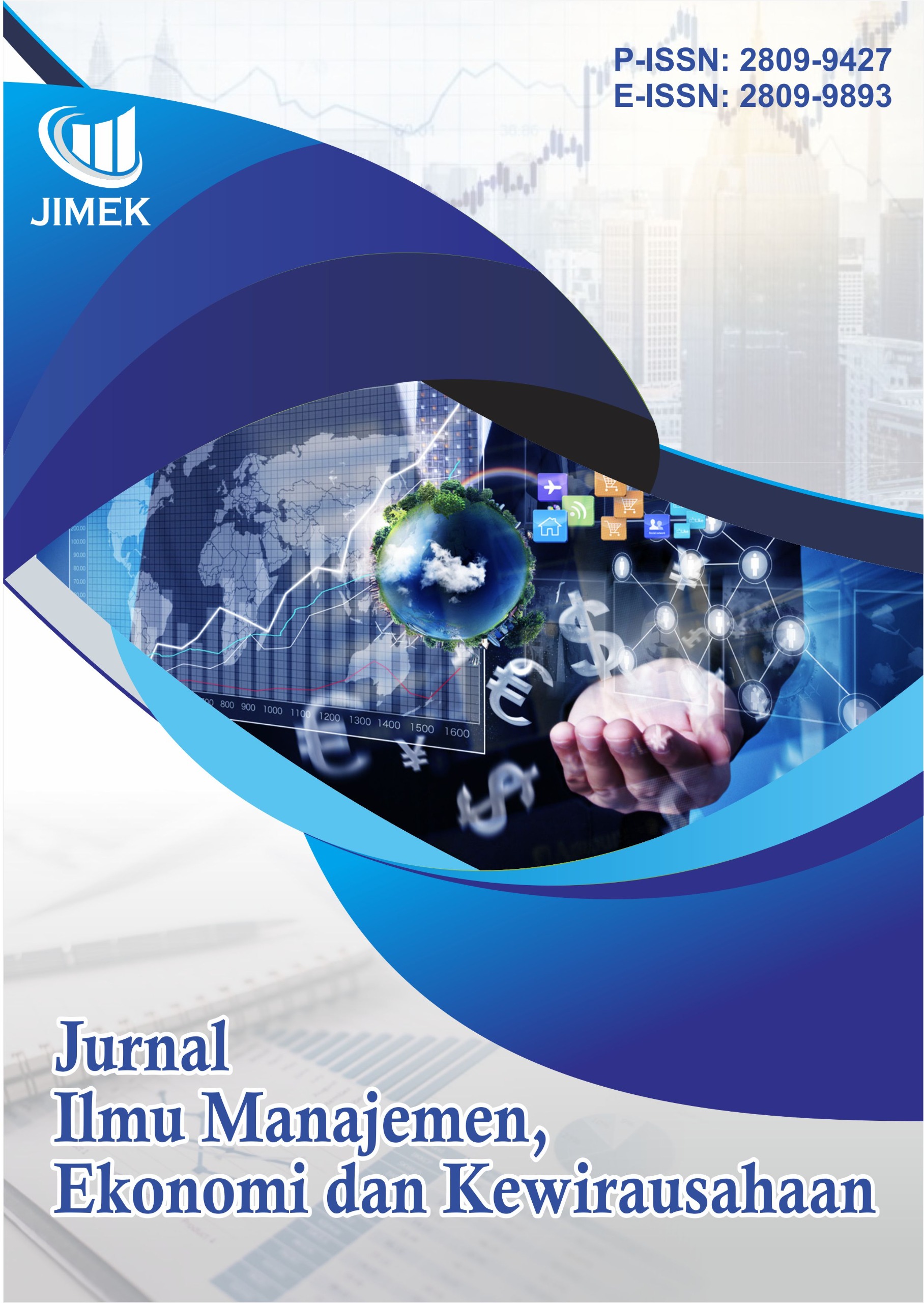Implementasi Sistem Informasi Manajemen E-learning Mahasiswa Universitas Nahdlatul Ulama Sidoarjo
DOI:
https://doi.org/10.55606/jimek.v5i3.8086Keywords:
learning, management information systems, studentsAbstract
Education in Indonesia is increasingly in line with technological advances that are an important part of people's lives, for example the internet. The use of internet technology, especially in internet-based learning (e-learning), is expected to increase student academic achievement. However, limited access to educational sites and the need to encourage students to maximize the use of the internet in learning remain challenges. E-learning has been implemented at Nahdlatul Ulama Sidoarjo University (UNUSIDA), and its success depends on factors such as the role of the campus, the technology applied, and the involvement of students and lecturers. The purpose of this study is to analyze the response of Accounting students of the Class of 2022 to the application of e-learning in the Management Information Systems course. The results of this study are expected to provide input for lecturers in evaluating the advantages and disadvantages of the e-learning system as well as as a forum for the to accommodate student expectations related to learning. Using qualitative methods with interview and observation data collection techniques. Results in the field show that the e-learning feature at UNUSIDA is good, with easy access to materials, digital attendance, and timely assignment collection. However, there are drawbacks such as overly common passwords, no notifications for task collection and attendance, and network stability issues. Students hope that there will be improvements in terms of password security and the addition of notifications to remind attendance and assignment collection. Overall, although e-learning has supported the learning process, several aspects need to be improved to improve efficiency and safety for students.
References
Ahfadh, Z. (2020). Persepsi Mahasiswa Dalam Pembelajaran Berbasis E-Learning Pada Prodi PAI Fakultas Ilmu Tarbiyah dan Keguruan Universitas Islam Negeri Sumatera Utara Stambuk 2016 (Doctoral dissertation, Universitas Islam Negeri Sumatera Utara).
Ainiyah, Z. (2015). Penggunaan edmodo sebagai media pembelajaran e-learning pada mata pelajaran otomatisasi perkantoran di smkn 1 surabaya. Jurnal Pendidikan Administrasi Perkantoran (JPAP), 3(3).
Ammaziroh, R. ., Salsabila, N. P. ., Abrarah, K. ., & Abidin, M. . (2024). Pemanfaatan E-Learning dalam Meningkatkan Kualitas Pembelajaran dan Kedisiplinan Mengerjakan Tugas Mahasiswa. JIIP - Jurnal Ilmiah Ilmu Pendidikan, 7(8), 7717-7722. https://doi.org/10.54371/jiip.v7i8.4830
Bakhri, S. (2021). Persepsi Mahasiswa Terhadap Kualitas Sistem, Kualitas Informasi, dan Kualitas Layanan Elearning UIN Walisongo (Studi Kasus Mata Kuliah Manajemen Sistem Informasi). Walisongo Journal of Information Technology, 3(1), 49-58.
Elyas, A. H. (2018). Penggunaan model pembelajaran e-learning dalam meningkatkan kualitas pembelajaran. Warta Dharmawangsa, (56).
Gunawan, V. A., Karliani, E., Triyani, T., Saefulloh, A., & Putra, L. S. A. (2021). Desain fitur aplikasi e- learning penunjang pembelajaran berbasis Android. Jurnal Edukasi dan Penelitian Informatika (JEPIN), 7(3), 314. ISSN(e): 2548-9364 / ISSN(p): 2460-0741
Hignasari, L. V., & Supriadi, M. (2020). Pengembangan E-Learning dengan Metode Self Assessment Untuk Meningkatkan Hasil Belajar Matematika Mahasiswa Universitas Mahendradatta. Jurnal Kependidikan: Jurnal Hasil Penelitian Dan Kajian Kepustakaan Di Bidang Pendidikan, Pengajaran Dan Pembelajaran, 6(2), 206–219. https://doi.org/10.33394/jk.v6i2.2476
Ismanto, I., & Chairunnas, A. (2021). Penerimaan dan Intensi Penggunaan E-Learning Mahasiswa Akuntansi pada Kondisi Sumber Daya Terbatas. Neraca Keuangan : Jurnal Ilmiah Akuntansi Dan Keuangan, 16(2), 57–70. https://doi.org/10.32832/neraca.v16i2.5493
Nasrullah, M. (2015). Implementasi sistem informasi manajemen berbasis teknologi informasi di Universitas Negeri Makassar. Jurnal Administrasi Publik, 5(1).
Resi Safira. (2023). Dampak Kemajuan Teknologi Pada Pendidikan Bahasa Indonesia. Student Scientific Creativity Journal, 1(3), 54–62. https://doi.org/10.55606/sscj-amik.v1i3.1329
Saifuddin, A., Ruhaena, L., & Pratisti, W. D. (2017). Meningkatkan kematangan karier peserta didik SMA dengan pelatihan reach your dreams dan konseling karier. Jurnal Psikologi, 44(1), 39-49.
Saputra, M. H., & Dristyan, F. (2024). Implementasi Teknologi Absensi Digital Berbasis Objek untuk Meningkatkan Kualitas Proses Belajar Mengajar di Perguruan Tinggi. Fusion: Journal of Research in Engineering, Technology and Applied Sciences, 1(2), 62-71.
Waruwu, M. (2023). Pendekatan Penelitian Pendidikan: Metode Penelitian Kualitatif, Metode Penelitian Kuantitatif dan Metode Penelitian Kombinasi (Mixed Method). Magister Administrasi Pendidikan, Universitas Kristen Satya Wacana, 7(1), 2896-2910.
Yodha, Seno A., et al. "Persepsi Mahasiswa terhadap Pelaksanaan E-Learning dalam Mata Kuliah Manajemen Sistem Informasi Mahasiswa Jurusan Teknologi Pendidikan Universitas Negeri Malang." Jurnal Kajian Teknologi Pendidikan, vol. 2, no. 3, 2019, pp. 181-187, doi:10.17977/um038v2i32019p181.
Wijoyo, A., Rahmawati, A., Sukmana, F., Sufarkhan, M., & Christantyo, R. (2024). Penerapan Sistem Informasi Manajemen dalam Meningkatkan Pengelolaan Sistem E-learning: Studi Kasus Mahasiswa Universitas Pamulang. Jurnal Ilmiah Wahana Pendidikan, 10(24), 14-19. Retrieved from http://www.jurnal.peneliti.net/index.php/JIWP/article/view/9202
Downloads
Published
How to Cite
Issue
Section
License
Copyright (c) 2025 Jurnal Ilmu Manajemen, Ekonomi dan Kewirausahaan

This work is licensed under a Creative Commons Attribution-ShareAlike 4.0 International License.








